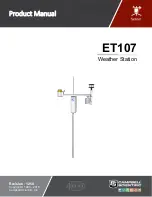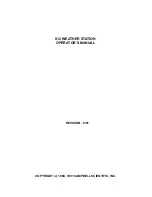
30
g
Operating Instruction
31
Transmission times
(UTC)
Forecast for
10:00 p.m. – 03:59 a.m.
the actual (new) day (TODAY)
04:00 a.m. – 09:59 a.m.
the next day (TOMORROW)
10:00 a.m. – 03:59 p.m.
the following day
(the day after TOMORROW)
04:00 p.m. – 06:59 p.m.
the day following this
(Two days after TOMORROW)
07:00 p.m. – 09:59 p.m.
the 30 additional regions
Angaben der Messung von Innen-/Außentemperatur
sowie Luftfeuchtigkeit
Temperaturanzeigebereich:
–40 °C bis 70 °C
Temperaturauflösung:
0,1 °C
Temperaturgenauigkeit:
+/– 1 °C
Anzeigebereich für Luftfeuchtigkeit:
Relative Luftfeuchtigkeit 1 % bis 99 %
Feuchtigkeitsauflösung:
1 %
Luftfeuchte-Genauigkeit:
+/– 5 % (von 25 %–80 % bei 25 °C)
Funkfrequenz:
433 MHz
Funkreichweite:
Max. 30 m (Freifeld)
Stromversorgung des Basisgeräts:
2 AA-Batterien
Stromversorgung des Außen-Thermo-Hygrometers:
2 AA-Batterien
MUST READ BEFORE GETTING START
Your Meteotime Weather Station is different to traditional
weather stations which measure the prevailing conditions
only, the data of this weather station is based on the
METEOTIME which is worked out on a daily basis by highly
professional meteorologists using state-of-art instruments.
The Meteotime Weather Station is engineered in such
a way that it is able to receive the coded METEOTIME
signal containing the weather information. The information
is broadcasted via the stations for radio-controlled
clocks HBG (located in Switzerland) and DCF (located
in Germany). For this reason, your Meteotime Weather
Station is also a radio-controlled clock with all the known
advantages, such as always showing the exact time, and
automatic change to daylight saving time in winter and
in summer.
You are able to receive weather forecasts for 60
meteorological regions within Europe for up to 4 days in
advance, and offer 2-day-advance forecasts for an
additional 30 regions.
WHAT DOES IT TAKE TO GET GOOD RECEPTION?
Similar to wireless signals like the mobile phone network
or Radio/TV broadcasts, it is possible that the Meteotime
Weather Stations do not receive signals all the time and
everywhere. The following are some tips you should follow
by all means to make sure that your device works properly:
The location for Meteotime Weather Station is very impor-
tant. For this reason we have equipped all of them with an
innovation test function (the TEST button) which enables
you test the quality of reception in your environment and to
place the device where the best conditions prevail.
Try your reception by testing your
Meteotime Weather Station as stated in the manual. To do
this, in the room you want to install the device, please turn
on all the potential sources of interference (for example,
a TV set). Then put the Meteotime Weather Station in the
place and direction you want it to be, but always at least in
one meter from the potential source of interference.
Watch the symbol
GOOD RECEPTION
or
BAD RECEPTION
on the display. Once you have found the right location for
GOOD RECEPTION
, you may leave the Meteotime Weather
Station there, it will collect its data by radio controlled
signal. Within a few minutes time and the date will appear.
However, the transfer of the very large amount of data
(forecast for all regions and days) will take much longer. To
completely receive all data will take up to 24 hours from the
time of the initial setup.
POTENTIAL SOURCES of INTERFERENCE
With all Meteotime Weather Stations, we should take
measures to provide best possible radio reception. HBG
and DCF are long wave stations with a broad reach (for ex-
ample, approximate 1500km for the DCF station). However,
as with a long wave radio station, interference may occur
which is often caused by the following influences:
• In buildings with lots of concrete, metal parts, and the
electrical equipment you may get reception problems
(for example, in shopping centers and at exhibitions).
• Electronic equipment such as TVs, computers,
household machines, etc., or transformers, power lines,
radio transmitters, and trains are potential sources of
interference.
• Atmospheric influences might affect the radio waves.
• The distance from the station, and also the geographic
conditions (mountains, etc.) also affect the reception.
Due to their great distance from the station, areas like
Southern Italy or Northern Scandinavia are critical.
• So-called (dead-spots) which make reception
impossible can appear everywhere.
• There is less interference in rural area than in heavily
built-up urban ones.
• On principle at night the sources of interference are less
active, consequently reception is better than during the
day.
• Week batteries in the device will lower the quality of
reception.
DATA TRANSFER
METEOTIME sends the data during precisely defined time
slots in accordance with UTC. (UTC, i.e. for Central Europe
during the winter UTC+1, during the summer UTC+2; for
Great Britain and Portugal during the winter UTC, during
the summer UTC+1)
















































